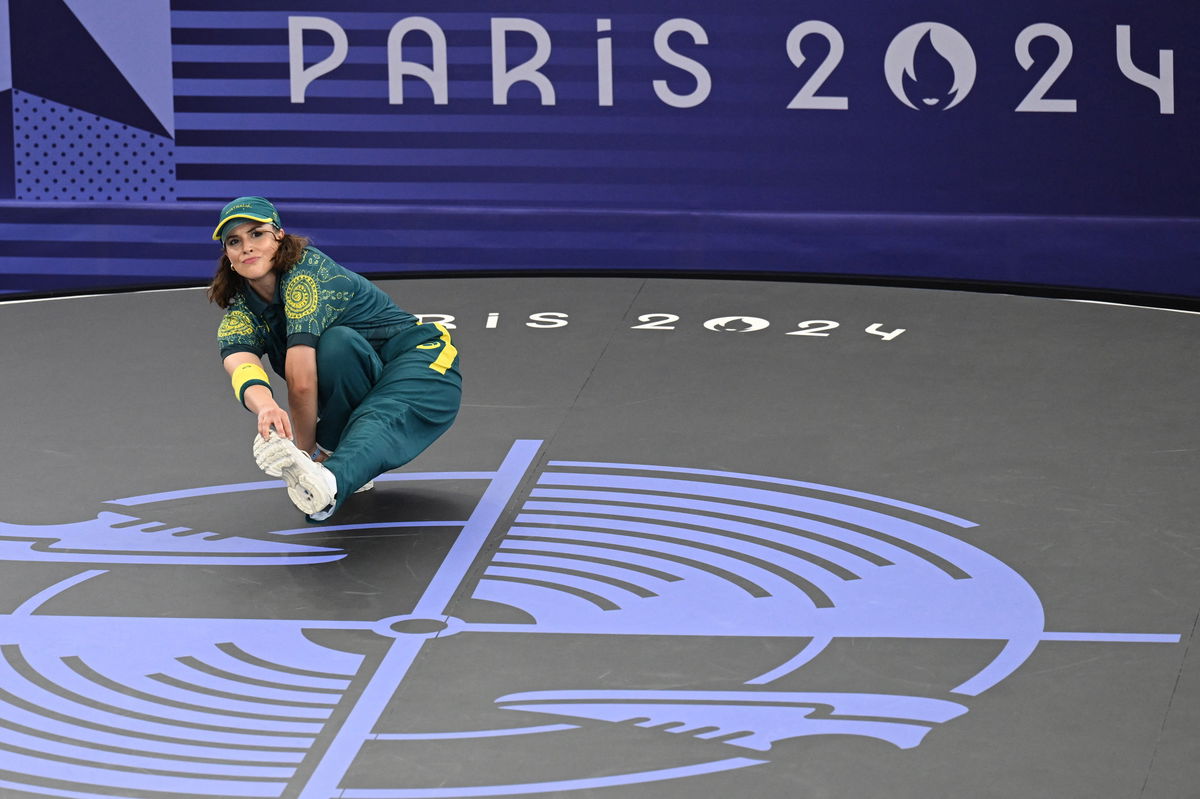
Reuters
Paris 2024 Olympics – Breaking – B-Girls Pre-Qualifier Battle – La Concorde 1, Paris, France – August 09, 2024. Raygun of Australia in action. REUTERS/Angelika Warmuth

Reuters
Paris 2024 Olympics – Breaking – B-Girls Pre-Qualifier Battle – La Concorde 1, Paris, France – August 09, 2024. Raygun of Australia in action. REUTERS/Angelika Warmuth
“I wanted to make an impression in a different way,” Rachael Gunn commented after facing elimination from the Paris Olympics. Notably, the host IOC had included breakdancing in the program of the greatest show on earth this time. And it attracted someone like Rachael to compete, who ironically lives in this art form. Yet, her several routines performed at the Olympics faced harsh criticism from the netizens.
Watch What’s Trending Now!
Not just the routines of Raygun (she’s popular by that name in the Australian breaking sphere), but her outfit and age also had to digest backlashes. One of the prominent X-handles in discussing sports, MatScouts put in, “Honestly, we shouldve used her to clean the mats at Midlands instead of the sterilazer that burned my retinas” to criticize Rachael’s performance at the Olympics. Still, the 36-year-old has yet to surrender. Rather, she aims to demolish all the taboos on breakdancing active in NSW that once came with the ban on the sport. She belongs to this place and is connected to several duties on this behalf.

Reuters
Paris 2024 Olympics – Breaking – B-Girls Round Robin – La Concorde 1, Paris, France – August 09, 2024. Raygun of Australia in action. REUTERS/Angelika Warmuth
In her interview with The Daily Observer, Rachael Gunn said, “In the late 90s, I believe, breaking was banned in NSW schools became it was deemed too dangerous.” Surprisingly, this type of dictate is only active in NSW among all other counties in Australia and to make the issue more painful, the schools in NSW have different rulings, tightening the noose.
ADVERTISEMENT
One such comes with ACT Public Schools, which have already banned the head spins where the breaking is active in full-fledged mode. Holding academic papers on breaking and its effect on the layers of society, Rachael Gunn thinks deeply about the unequal treatment of the sport in her home region.
“There’s a lot of resistance and a lot of negativity around hip hop culture in NSW,” Rachael Gunn concluded while fact-finding the reasons behind the taboos. She has been active in the sport for almost 20 years now and has yet to face any serious injury because of the head spin or any other routines that come under breaking. Why? She has been taking total control of her body, and there’s no external thrust that could make her injury-prone like sports like gymnastics do. So, she thinks her participation in the Olympics might motivate the school to take break dancing seriously and introduce it to the curriculum; after all, this sport will teach them “how to fall properly.” This defiant mindset of hers was present at the Paris Olympics as well.
ADVERTISEMENT
Rachael Gunn represents Australian culture at the Paris Olympics
Unlike many of her competitors at the Paris Olympics, Rachael Gunn stepped on the floor wearing a dark green and gold tracksuit, signifying Australian national colors. Her cap also bore the national identity. This representation felt odd to many. She remained distinct on another front; she used her original name in the competition while many others competed under their breaking names, such as Logistx. Raygun did not find the logic behind it.
ADVERTISEMENT
“I can’t help think deeply about how things are represented, or how things work … what the broader consequences are for this decision or that decision,” she stated, having a deep thought on this. Meanwhile, at the Paris Olympics, her breaking move emulating the kangaroo hop became a laughable matter over the internet. It did not earn her a point when she had to bid adieu to the Games from the round-robin stage, but she made her mark. Rachael Gunn is still in the discussions. Now it will be interesting to see whether the schools in NSW note her effort or continue with the current system.
ADVERTISEMENT
ADVERTISEMENT
ADVERTISEMENT

